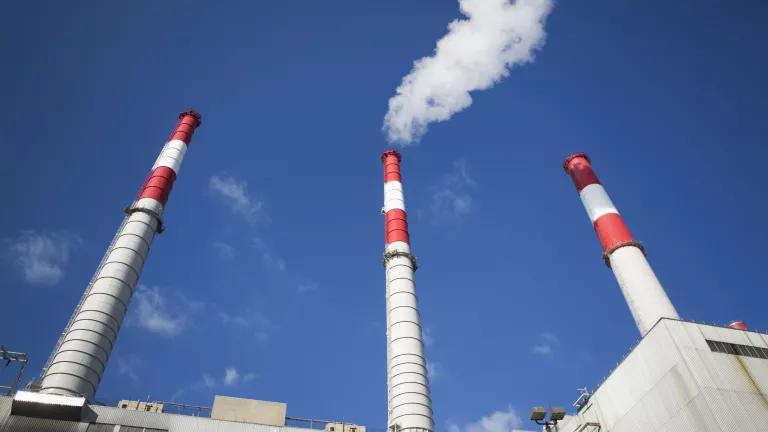
Image of Indian Point nuclear plant
Written with assistance from Jhena Vigrass, New York Regional Team Program Assistant and Daniela Rico, NRDC Environmental Justice Intern
Last week, four New York State agencies released the executive summary of a safety assessment of the Algonquin Incremental Market (AIM) pipeline, a fracked gas pipeline that runs a quarter mile from the Indian Point Energy Center (IPEC), a nuclear power plant in Westchester County. The executive summary highlights several major areas of risk presented by AIM’s location adjacent to Indian Point.
In 2016, New York Governor Cuomo ordered a safety analysis on the pipeline after his administration greenlighted AIM by granting the pipeline a necessary certification under the Clean Water Act (a “401 water quality certification”).
The AIM pipeline system currently transports natural gas through Pennsylvania, Connecticut, New York, Rhode Island, and Massachusetts; traveling underneath the Hudson River in New York. When the AIM pipeline was approved by FERC in March 2015, the nearly billion-dollar plan added 11.1 miles of 42-inch wide pipeline and replaced 26.3 miles of existing pipeline along the route. Over the years, organizations throughout the region, including NRDC, have fought its expansion.
The report, produced by the New York Division of Homeland Security and Emergency Services and the Departments of Public Service, Environmental Conservation, and Health, raises significant concerns regarding the many risks of having the pipeline so close to the Indian Point nuclear plant. In a separate letter sent to FERC, the agencies urge the Federal Energy Regulatory Commission (FERC) to take additional action to lessen all identified potential risks.
According to the report’s executive summary, the only portion of the report released to the public at this time, the analysis identifies 46 overall potential risks associated with the pipeline. The executive summary explains the top nine risks, many of which involve potential impacts to the AIM pipeline as well as the two existing Algonquin Mainline pipeline segments. These risks include damage from river traffic or dredging, third-party excavation, seismic activity, corrosion, and the release of hazardous waste materials due to a potential pipeline incident.
As a consequence of the report, New York State agencies sent a letter to FERC asking them to, among other things, not approve any additional capacity or increased pressure within the pipeline.
Indeed, the safety of these pipelines is concerning. Spectra Energy, the company responsible for original pipeline construction, has a poor safety record--Since 2007, state agencies have fined Spectra over $19 million in safety violations. In addition, advocates throughout the region have criticized FERC’s and Nuclear Regulatory Commission’s review of the AIM pipeline project for failing to model certain pipeline ruptures, and showing disregard for the public’s safety.

The AIM pipeline safety assessment summary demonstrates the many risks of building fracked gas pipelines in areas with high population densities and sensitive ecosystems. These risks are further exacerbated by AIM’s proximity to Indian Point, an ageing nuclear power plant with a mixed safety record that is set for closure by 2021. AIM’s construction was a bad idea from the beginning, and we now look to state and federal regulatory agencies to do everything in their power to mitigate any and all risks presented by the location of this fracked gas pipeline.



